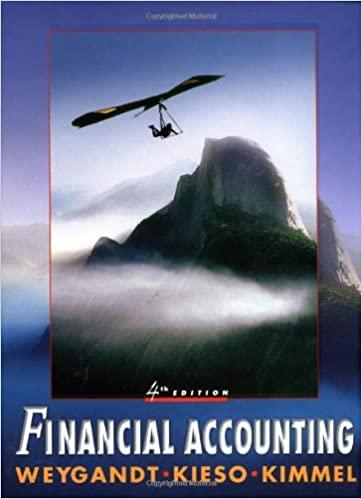Question
You are a manager in the audit department of Pigeon & Co, a firm of Chartered Certified Accountants. You are responsible for the audit of
You are a manager in the audit department of Pigeon & Co, a firm of Chartered Certified Accountants. You are responsible for the audit of Goldfinch Gas Co, a company which is the main supplier of gas to business and residential customers across the country.
The audit fieldwork for the year ended 30 June 2017 is nearing completion. The draft financial statements recognise profit before tax of $130 million (2016 $110 million), and total assets of $1,900 million (2016 $1,878 million).
You are reviewing the audit files and the following matters have been noted for your attention by the audit senior:
A provision of $430 million (2016 $488 million) is recognisedas a long-term liability. The provision is in respect of decommissioning a number of gas production and storage facilities when they are at the end of their useful lives. The estimate of the decommissioning costs has been based on price levels and technology at the reporting date, and discounted to present value using an interest rate of 8% (2016 6%). The timing of decommissioning payments is dependent on the estimated useful lives of the facilities but is expected to occur by 2046, with the majority of the provision being utilised between 2025 and 2040.
The accounting policy note discusses the methodology used by management for determining the value of the decommissioning provision and states that this is an area of critical accounting judgements including key areas of estimation uncertainty. The estimate has been made by management. In previous years, a management expert was engaged to provide the estimate but as this was expensive, management decided to produce their ownestimate for the year ended 30 June 2017. (10 marks)
The draft statement of financial position includes plant and equipment, unrelated to gas production and storage facilities, with a carrying value of $65 million. There was a change in the estimation technique used to determine the depreciation in respect of these assets during the year. Depreciation was previously calculated on a straight line basis over a 10-year useful life, but from 1 July 2016, the useful life has been amended to 15 years. The finance director explained to the audit team that the review of estimated useful life has been made on the basis that the assets are lasting longer than originally anticipated.
The change in depreciation policy has been accounted for as a prior year adjustment, resulting in an increase of $20 million to property, plant and equipment and to retained earnings. The depreciation expense recognised in draft profit for the year to 30 June 2017 is $12 million (2016 $15 million). (8 marks)
The draft statement of financial position recognises total trade receivables of $450 million (2016 $390 million). The audit team has performed substantive analytical procedures on trade receivables with the following results:
Receivables collection period: 2017 2016
Residential customers 65 days 58 days
Business customers 50 days 55 days
The notes to the financial statements contain the following information relating to trade receivables: Trade receivables: 2017 2016
$ million $ million
Residential customers 158 145
Business customers 356 289
Less: allowance for credit losses (64) (44)
Net trade receivables 450 390
Receivables from business customers are generally reviewed for impairment on an individual basis when a customer changes their gas supplier, discontinuing their relationship with the Group. Receivables from residential customers are reviewed for impairment where they are more than 90 days late in paying their bill, or where customers have a history of late payment. Since a new customer billing system was introduced in September 2016, management has exercised additional judgement regarding the appropriate level of allowance for these trade receivables.
Required:
Comment on the matters to be considered, and explain the audit evidence you should expect to find during your file review in respect of each of the issues described above.(7 marks)
Step by Step Solution
There are 3 Steps involved in it
Step: 1

Get Instant Access to Expert-Tailored Solutions
See step-by-step solutions with expert insights and AI powered tools for academic success
Step: 2

Step: 3

Ace Your Homework with AI
Get the answers you need in no time with our AI-driven, step-by-step assistance
Get Started


